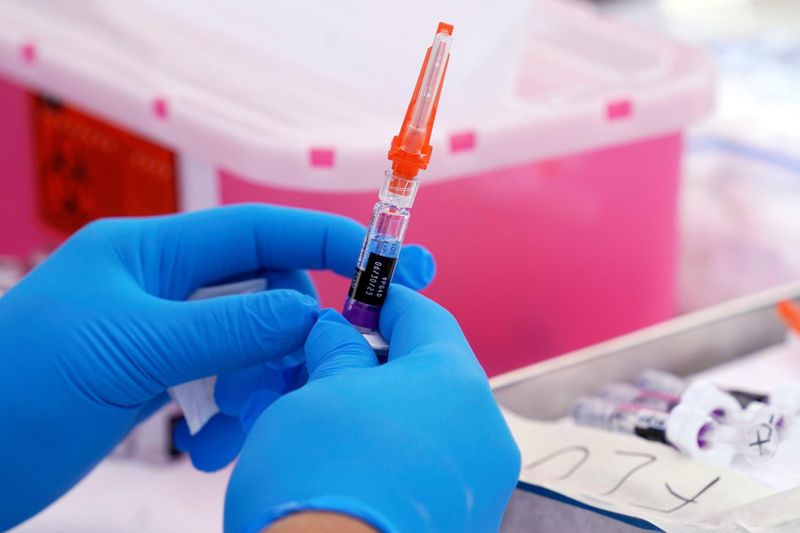
New Delhi: A total of 656 cases of COVID-19 subvariant JN.1 and one death have been reported in the country for the past 24 hours, according to data from the Ministry of Health and Family Welfare.
The total number of active cases of COVID in the country reached 3,742.
On Saturday, a multifold spurt in fresh COVID cases was noted in India, with Kerala contributing the majority of those.
Also read
A total of 423 cases were reported, of which 266 were from Kerala and 70 from neighbouring Karnataka, Union health ministry data showed. Two deaths were reported in Kerala.
Meanwhile, former AIIMS director and senior pulmonologist, Dr Randeep Guleria said that the new subvariant of COVID is not causing severe infections and hospitalisation.
“It is more transmissible, it is spreading more rapidly, and it is gradually becoming a dominant variant. It is causing more infections but the data also suggests that it is not causing severe infections or hospitalisations. Most of the symptoms are predominantly in the upper airways, like fever, cough, cold, sore throat, running nose and body aches,” Dr Guleria said.
Additional dose of vaccine needed
Earlier, India SARS-CoV-2 Genomics Consortium (INSACOG) chief Dr NK Arora also said that no additional dose of vaccine is needed against the subvariant at present.
Speaking to ANI, Dr Arora said, “I would say prevention is required for all those who are 60 years of age or older, who are likely to have comorbidities and those who are on drugs that suppress our immunity, like cancer patients. If they have not taken precaution so far, then they are advised to take precaution; otherwise, there is no need for any additional doses.”
The INSACOG chief asserted that various subvariants of Omicron have been reported but none of them have increased severity.
He reiterated the fact that there is no need for panic but that it requires vigilance. “I would like to assure everybody that we need to be vigilant, but not panicky at all,” he added.
52% jump in cases
The World Health Organisation (WHO) said on Saturday that global number of new COVID-19 cases has increased by 52 per cent during the last one month.
In the latest epidemiological update on Friday, the UN health body reported over 850,000 new cases worldwide in the 28-day period from November 20 to December 17.
The number of new deaths decreased by 8 per cent as compared to the previous 28-day period, with over 3,000 new fatalities reported. As of December 17, over 772 million confirmed cases and nearly seven million deaths have been reported globally.
During the period from November 13 to December 10, over 118,000 new COVID hospitalisations and over 1,600 new intensive care unit (ICU) admissions have been recorded with an overall increase of 23 per cent and 51 per cent respectively amongst the countries reporting consistently within the current and past reporting periods.
WHO recently classified JN.1 as a variant of interest, distinct from its parent lineage BA.2.86. However, the global health body emphasised that the overall risk posed by JN.1 remains low based on current evidence.
Due to its rapidly increasing spread, WHO is classifying the variant JN.1 as a separate variant of interest (VOI) from the parent lineage BA.2.86. It was previously classified as VOI as part of BA.2.86 sublineages.
The cases of this new variant have been found not only in India but also in other countries, including the US, Singapore and England.
London worst affected
About 1 in every 24 people in England and Scotland has COVID-19, with London the worst-affected area as the highly infectious JN.1 variant spreads rapidly.
The prevalence is also highest in people from 18 to 44 years old, according to a joint report by the UK Health Security Agency and the Office for National Statistics released Thursday.

JN.1 variant accounts for 39%-50% of cases in US
The US Centers for Disease Control and Prevention (CDC) has said that JN.1 accounts for 39% to 50% of cases in the United States as of December 23, according to the agency’s projections.
This is an increase from the estimated 15% to 29% of cases in the United States, the CDC had projected as of December 8.
The CDC said the variant continues to cause an increasing share of infections and is now the most widely circulating variant in the country.
The continued growth suggests the variant is either more transmissible or better at evading immune systems than other circulating variants, it added.
It is too early to know whether or to what extent JN.1 will cause an increase in infections or hospitalizations, the CDC said, adding that existing vaccines, tests, and treatments still work well against it.
On Tuesday, the World Health Organization classified JN.1 as a “variant of interest” and said current evidence shows risk to public health was low from the strain.












